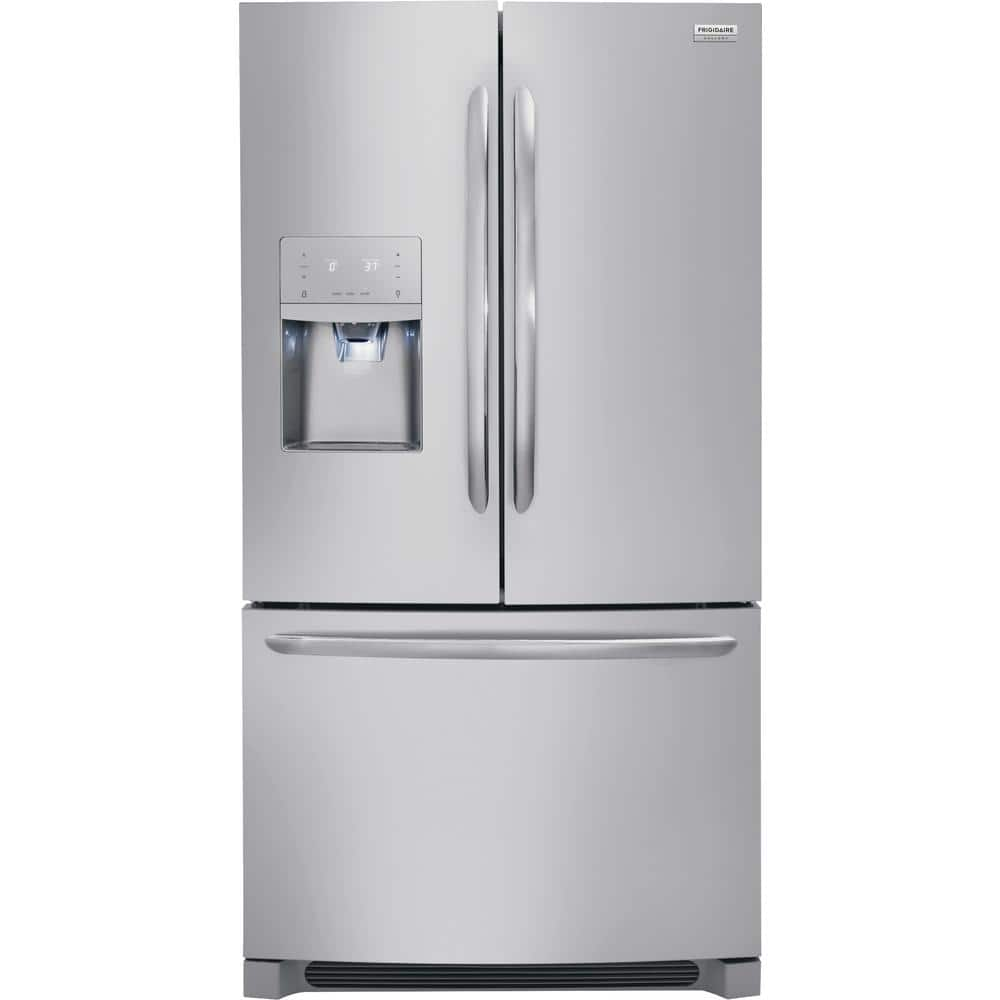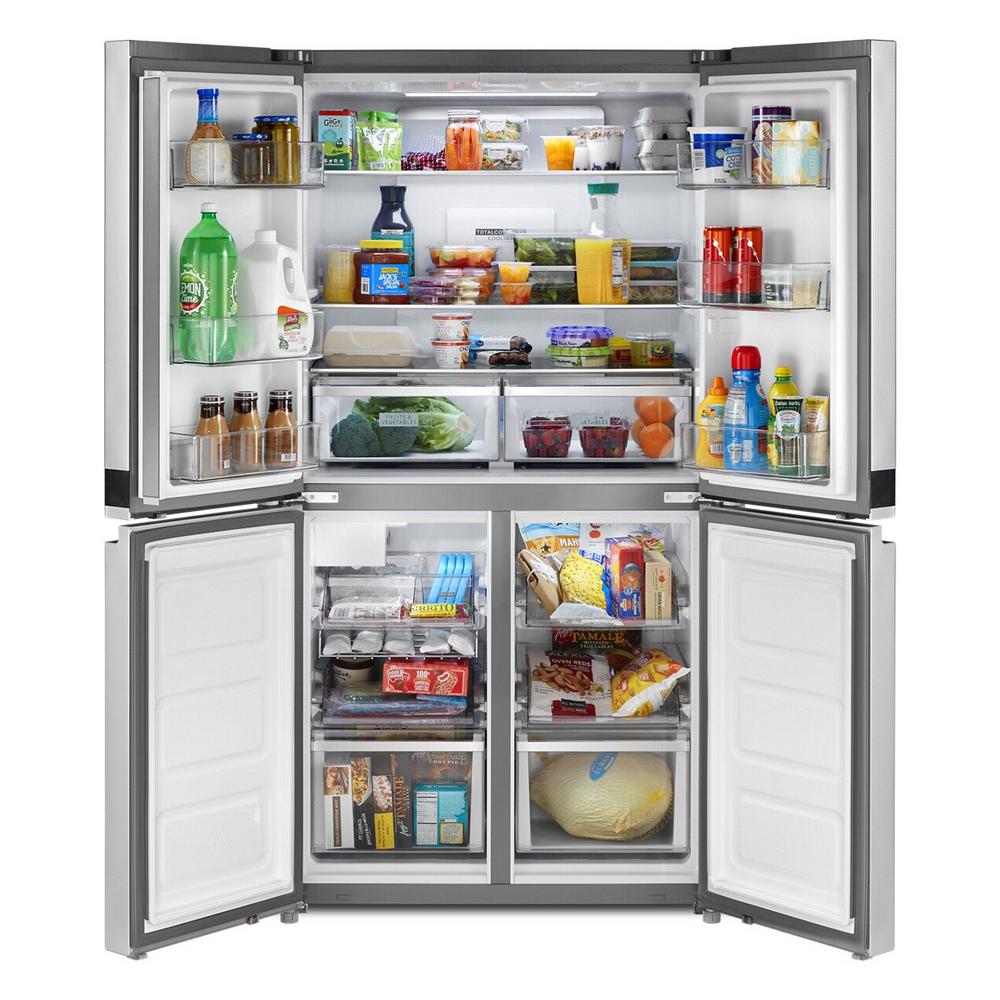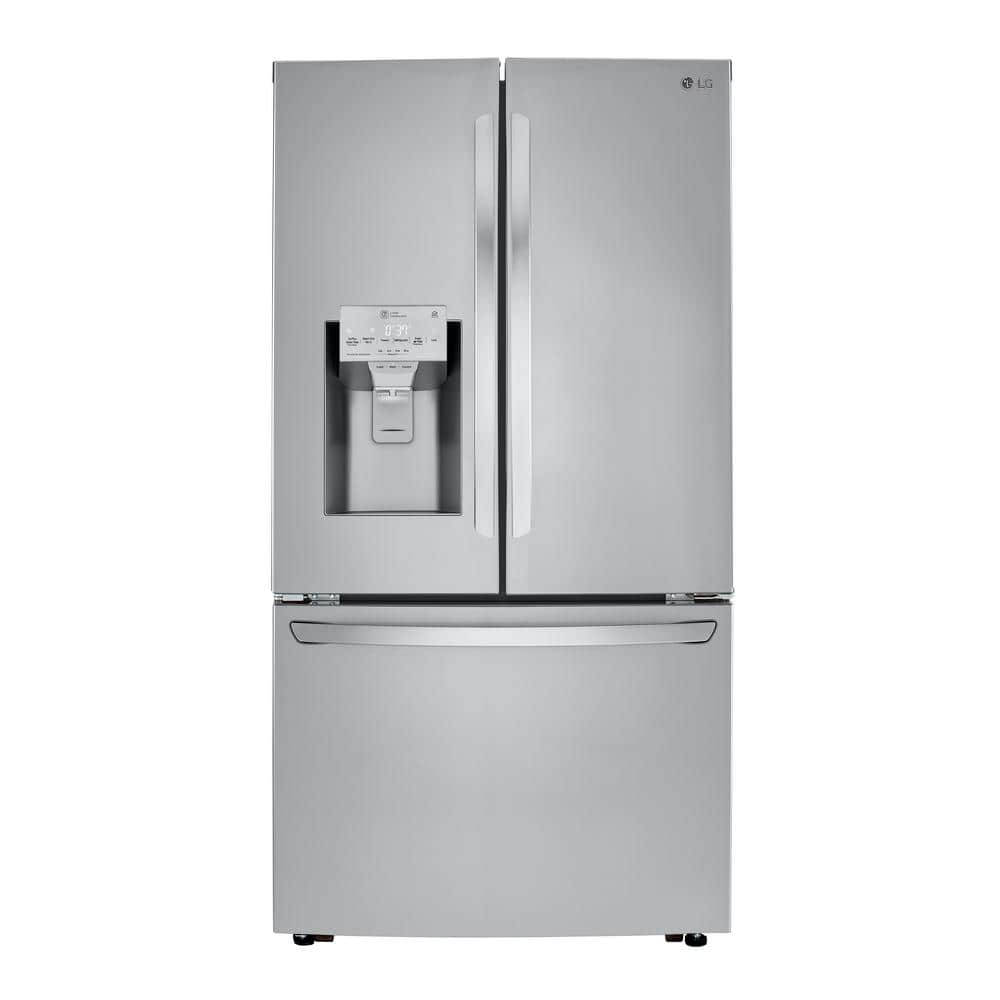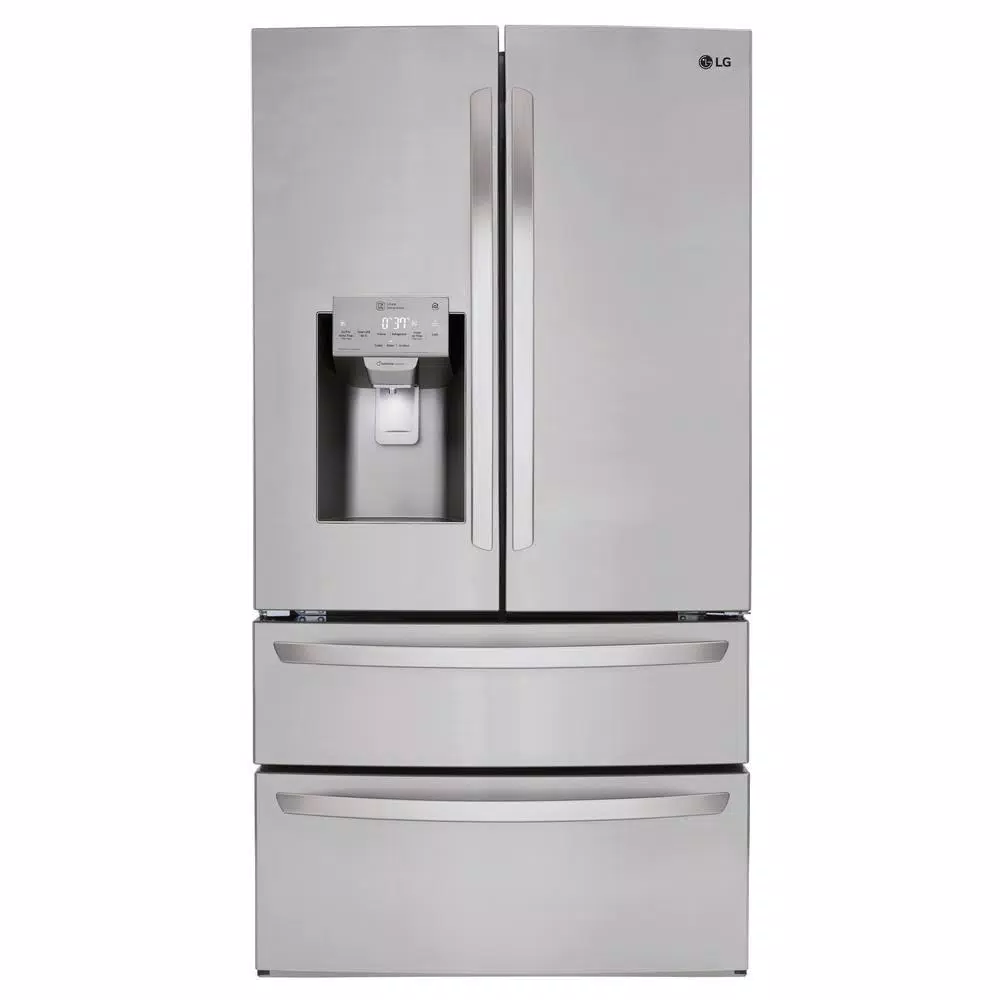Frigidaire 21.7 cu. ft. French Door Refrigerator in Stainless Steel, Counter Depth
Counter-Depth design integrates seamlessly in your kitchen space. Smudge-Proof Stainless Steel resists fingerprints. Keep produce fresh in our humidity controlled crisper drawers.
The Frigidaire Gallery 21.7 cu. ft. Smudge-Proof Stainless Steel French Door Refrigerator has a large capacity so you can store more. It’s easy to stay organized with a Full-Width Drawer that is large enough for party platters, 2 Crisper Drawers for fruits and vegetables and door bins that have room for large items such as gallons of milk. The ENERGY STAR-qualified refrigerator also has beautiful LED lighting that keeps contents clearly visible. Smudge-Proof Stainless Steel offers a protective coating that reduces fingerprints and smudges.
- ENERGY STAR-qualified to meet or exceed federal guidelines for energy efficiency for year-round energy and money savings
- Ice Maker is located in the fresh food compartment on the left side
- Icemaker uses PureSource Ultra filtered water and eliminates the need to fill ice trays
- 2 Half-width Adjustable SpillSafe Shelves help to contain spills and adjust for loading flexibility
- Express-select control panel with green LED display features 5 options including quick ice, display light, high temp alert and filter change indicator
- Temperature management system combines electronic controls and a multi-flow air system to help keep foods fresh longer
- Counter Depth refrigerator allows for a streamlined look with kitchen cabinets
- 1 Full-Width Cool Zone Drawer provides enough space to easily store anything from deli items to large platters or convenient storage for your other favorite foods and 2 Crisper Drawers with Humidity-Controls keep your fruits and vegetables fresh
- Door storage includes a Covered Dairy Compartment, 2 Store More Door bins, 1 Fixed Clear Door Bin and 2 Adjustable Clear Door Bins that offer storage for larger items in the door
- Large 15.1 cu. ft. fresh food capacity has the space to keep foods organized and 6.9 cu. ft. freezer capacity gives you room for storing all of your frozen foods
- Freezer drawer glides out smoothly and fully extends giving you easy access to 2 Sliding Full-width baskets
- Water Filter Change Indicator Signal lets you know when the filter needs to be replaced
- Soft-Arc Designer Doors with Ice and Water Dispenser with Color-coordinated handles
- Designer LED Lighting is beautiful and makes it easy to find what you’re looking for
- A 3-door refrigerator has a 2-door refrigerator compartment on top and a freezer on the bottom
- Easily installs into a standard 36 in. opening
Additional information
| Depth (Excluding Handles) | 28.5 in |
|---|---|
| Depth (Including Handles) | 31 |
| Depth (Less Door) | 23.875 |
| Depth With Door Open 90 Degrees (In) | 42.5 |
| Height to Top of Door Hinge (in.) | 69.875 |
| Height to Top of Refrigerator (in.) | 68.625 |
| Product Depth x Height x Width (in.) | 31 x 69.875 x 36 |
| Refrigerator Width (In.) | 36 |
| Certifications and Listings | Energy Star,Star-K |
| Manufacturer Warranty | 1 Year Limited Warranty |






by Sandra
Love my new Frigidaire french door refrigerator!
by Diane
Plenty of room in it and love the water and ice in the door. Love the style. The freezer is bigger than I thought. Very happy with it.
by Cosh
The refrigerator is the perfect size for the space. Plenty of drawers and shelves. Ample freezer space. I took away one star because it’s loud. Water cycling through or the ice maker… otherwise no complaints. (I’ve only been using it for 1 month.
by John
Excellent refrigerator and features . I really like the look of the Frigidaire compared to other brands.
by Joe
I’m rating this refrigerator 4 stars after owning it since May 2020. We purchased it as a suite…Gallery dishwasher, range, fridge and microwave because we like the Frigidaire (Electrolux) products. We have not had any of the issues people seem to have with it… no leaking, no frost issues, no frozen items in the fridge area, no unexpected noises. Except that the rollers holding the two upper drawers have already broken. This wouldn’t have happened 20 years ago. I can accept the noises that refrigerators make…that’s normal. But weak parts is not something I’m used to in appliances. Broken parts shouldn’t have happened after only a year of normal use. Now I have to spend money to replace an entire shelf, only for it to happen again in the future. Poor manufacturing design. If you put only a few light items in the drawers, they may last longer. That’s not acceptable. Poorly designed drawer slides and rollers should be a warranty item.
by Baer
Works as described. Only thing I wish it had was a door alarm.
by James
Good quality. Counter depth doesn’t hold as much but like the fridge nevertheless.
by Michael
We are enjoying our new fridg except for the fact that cold water doesn’t come out of it. The water is lukewarm. It also doesn’t hold as much food as our other frig. It does keep food well.